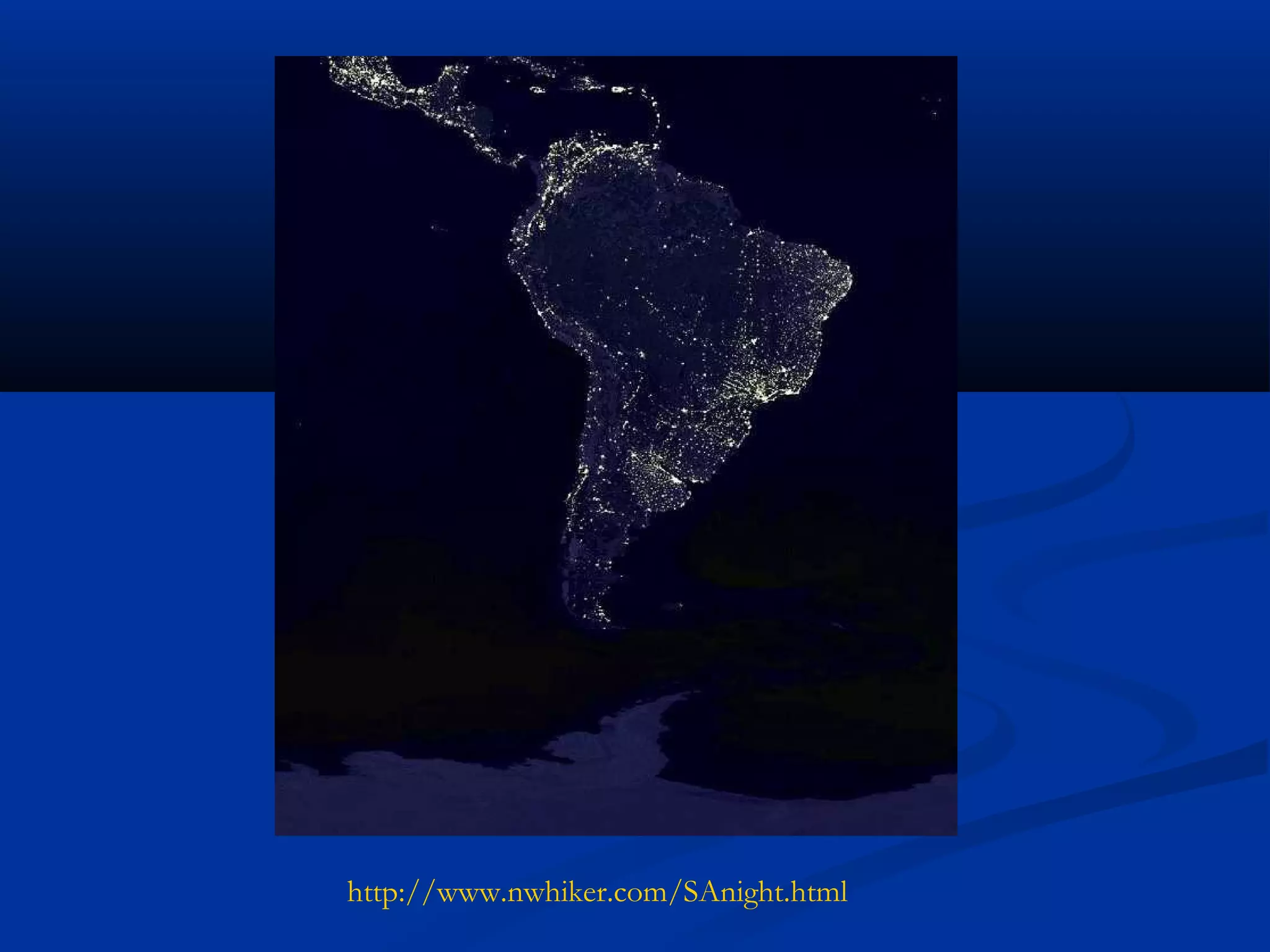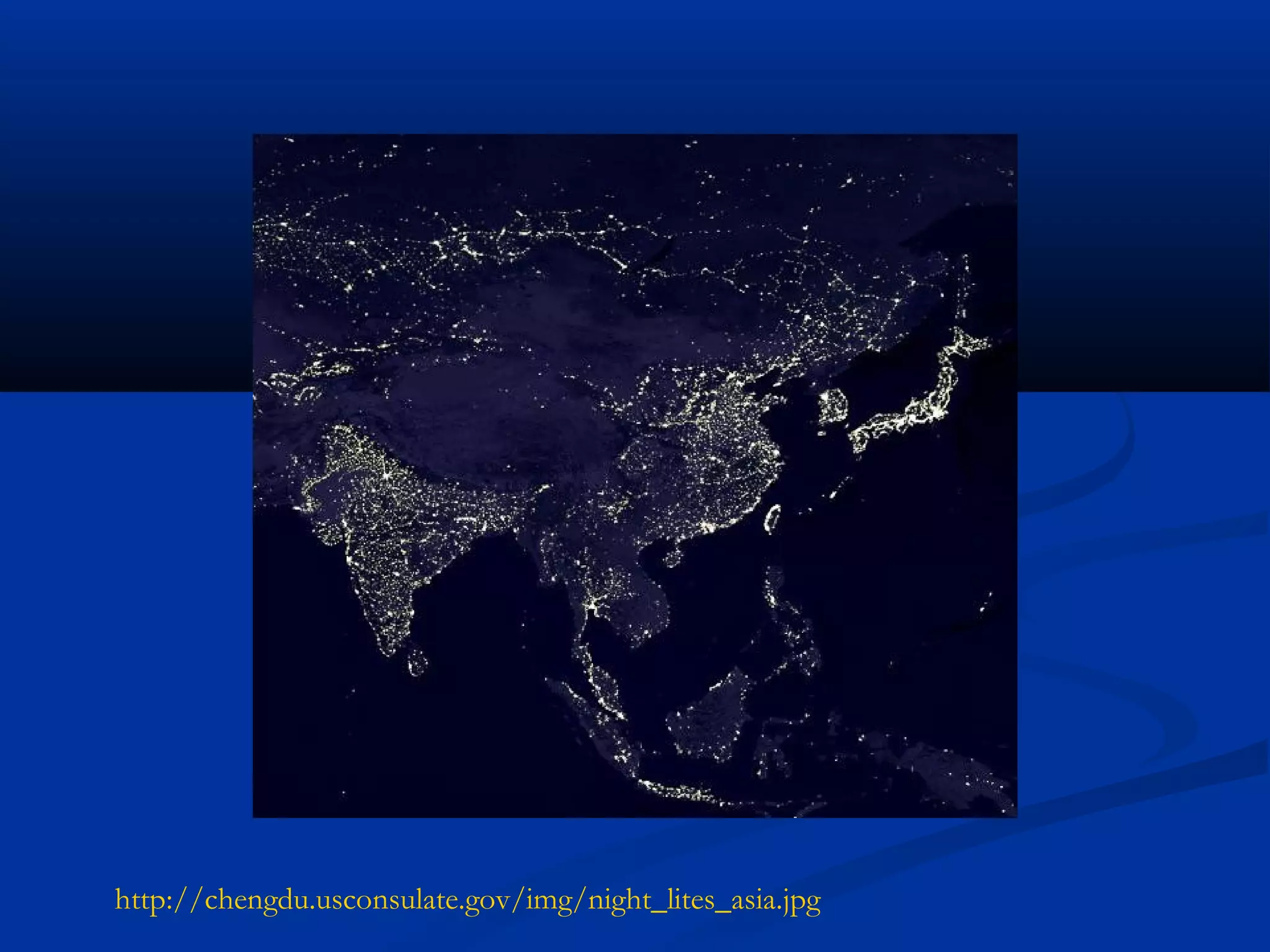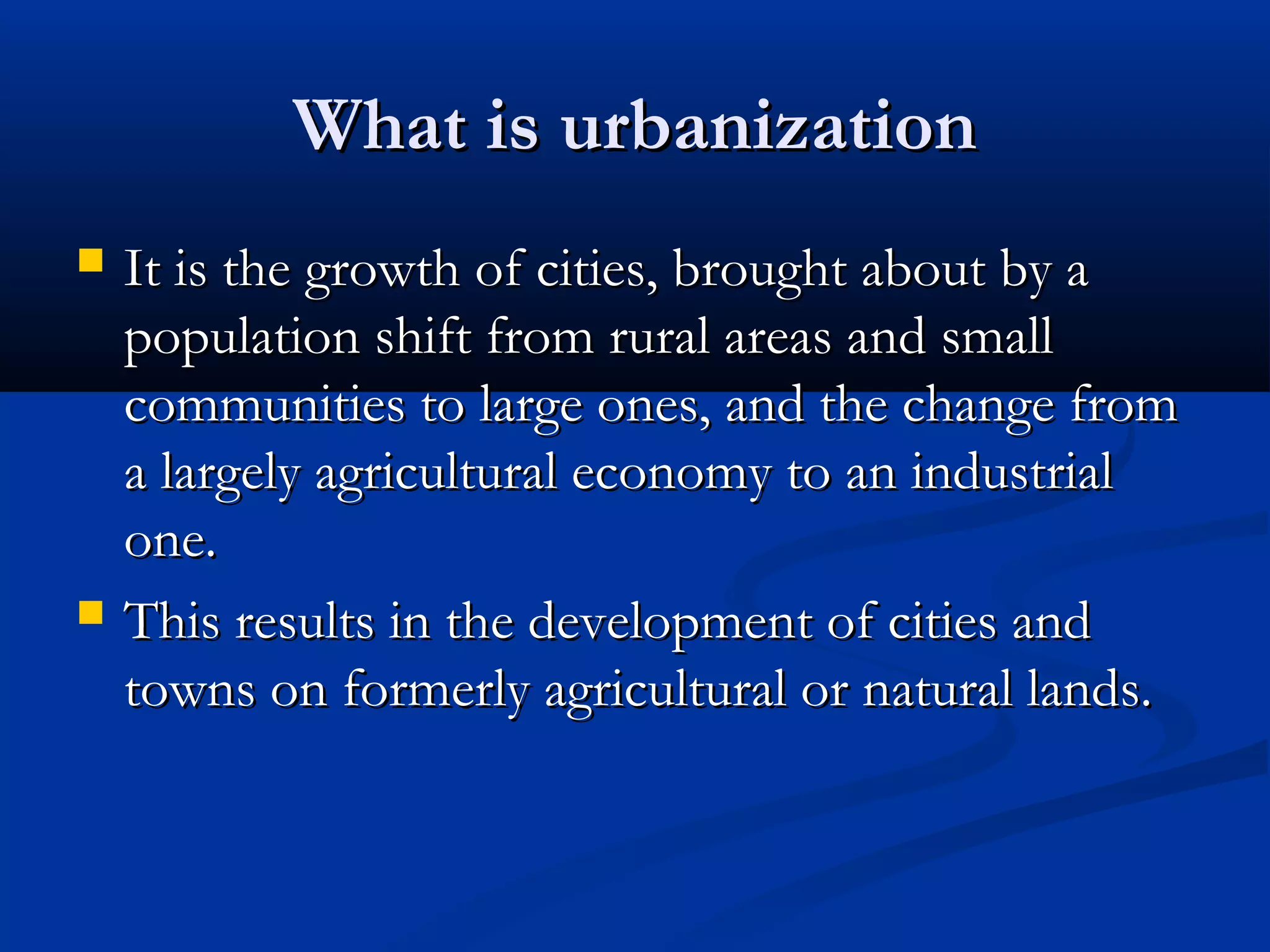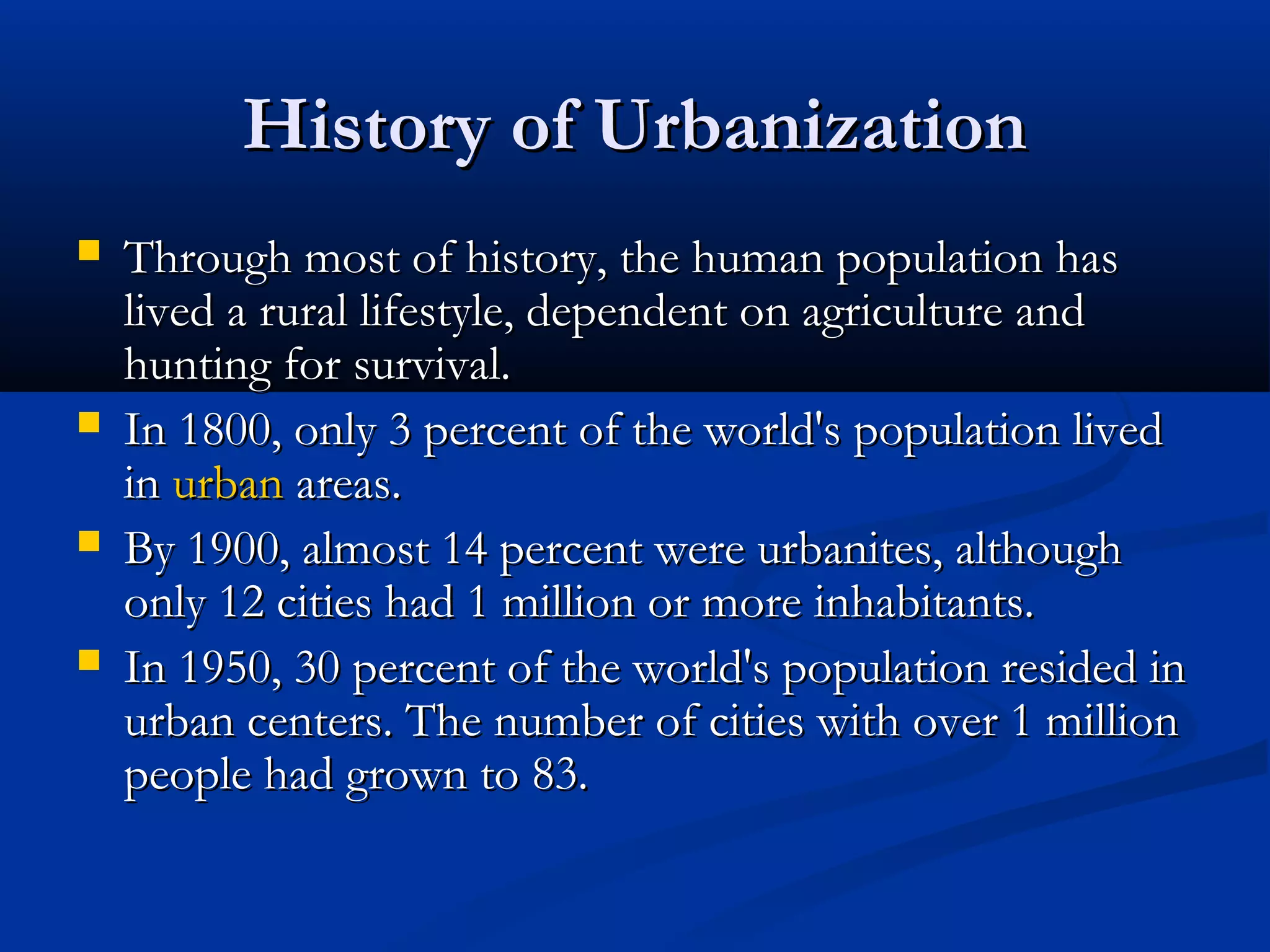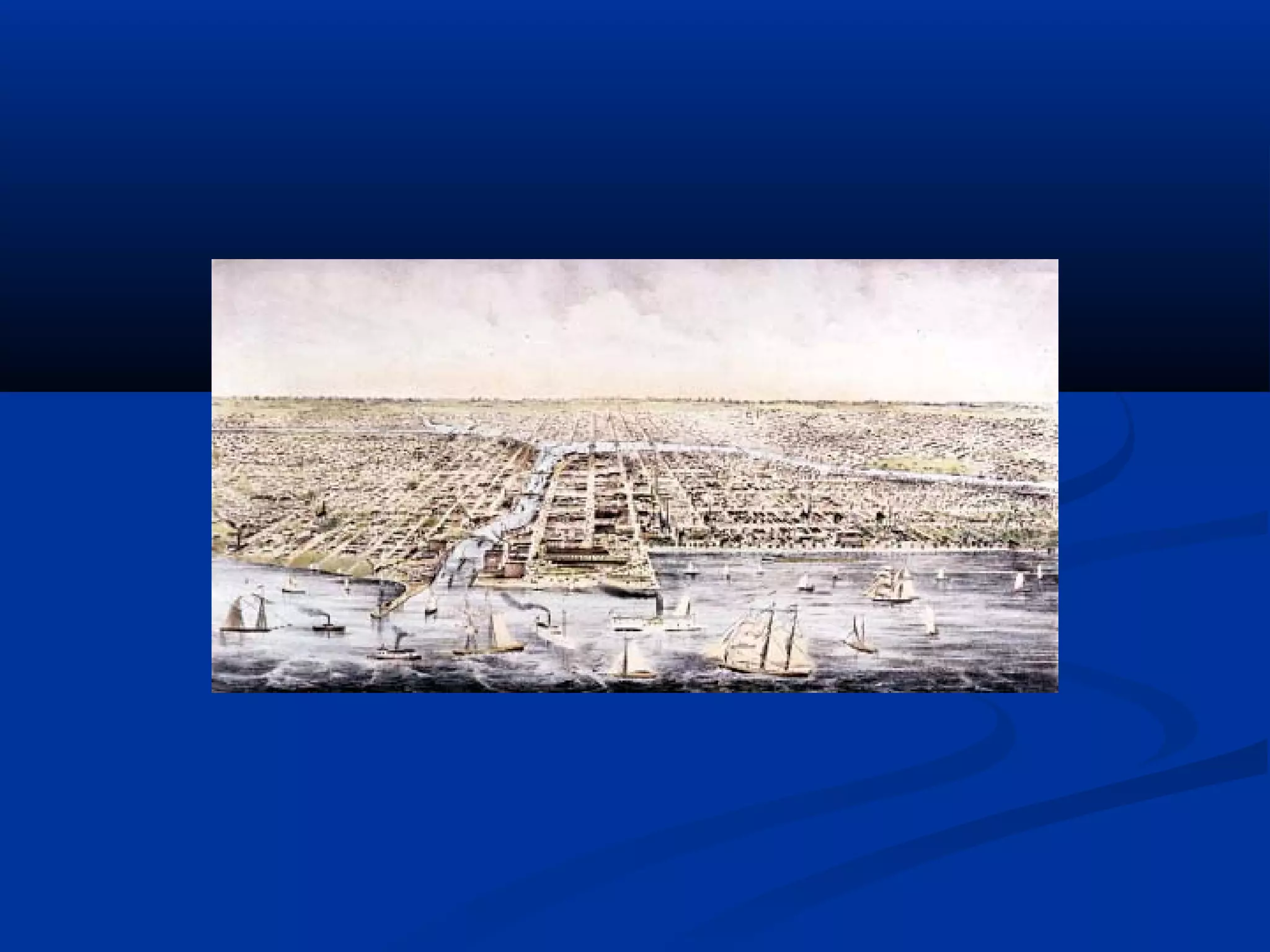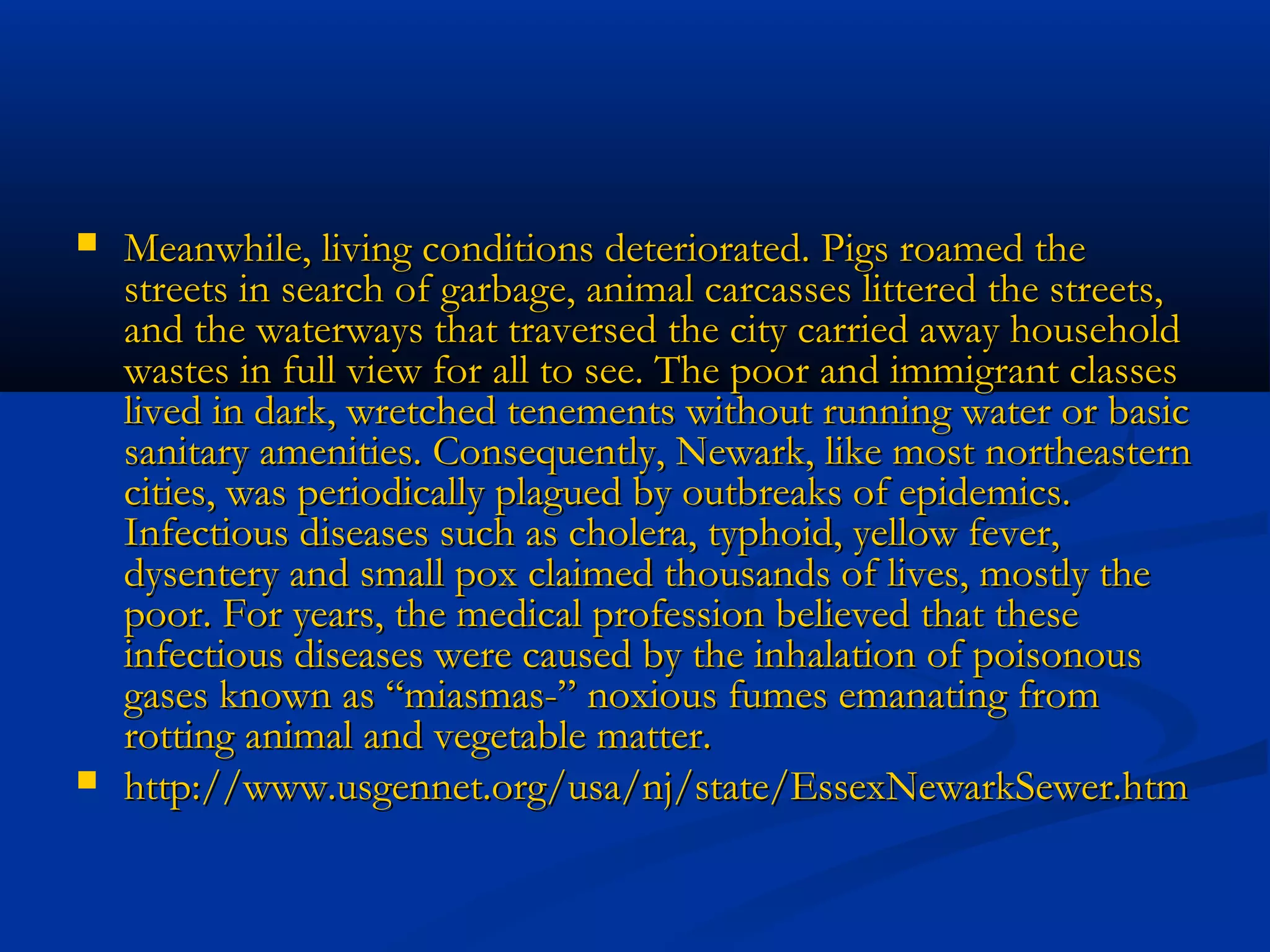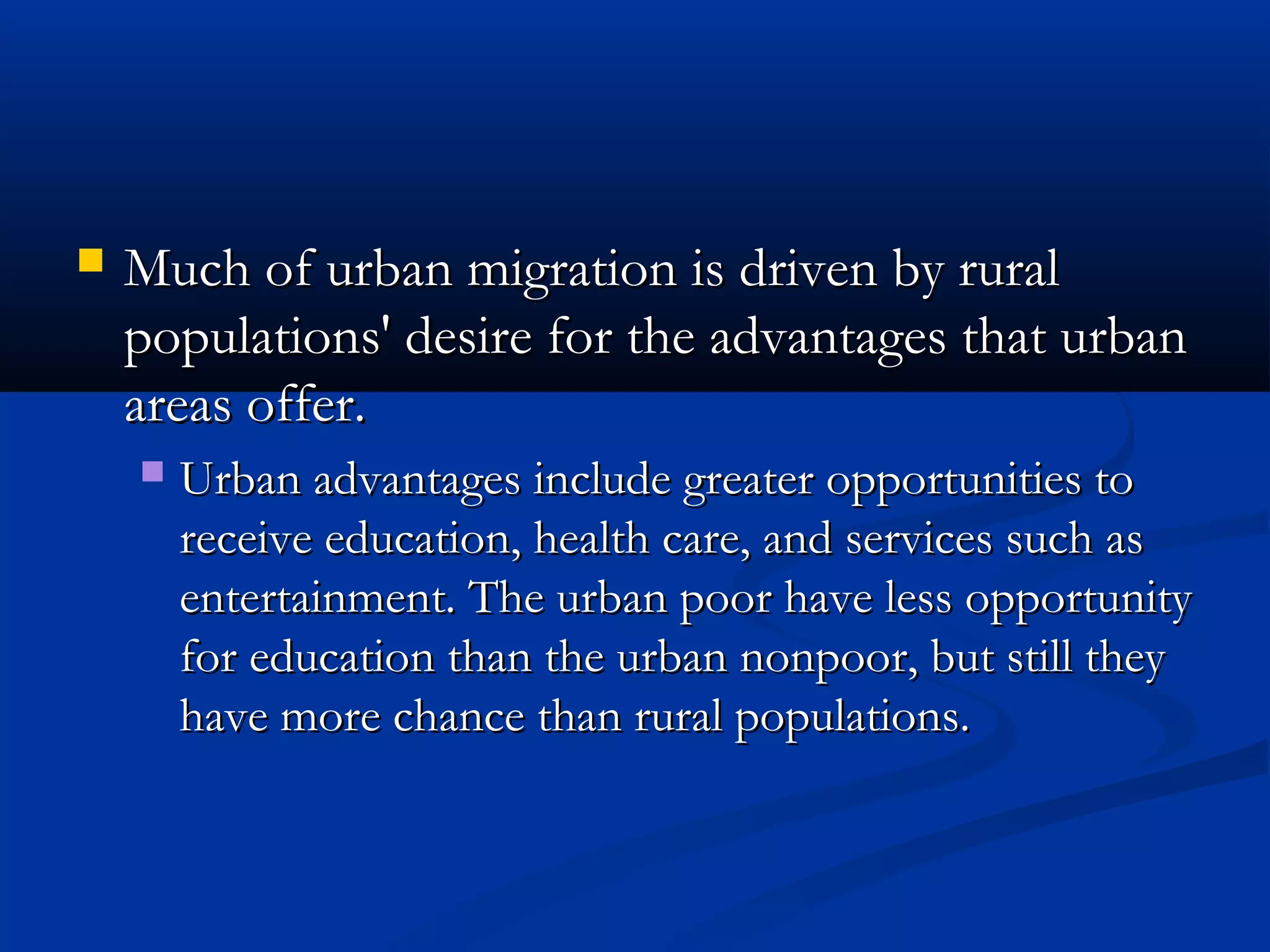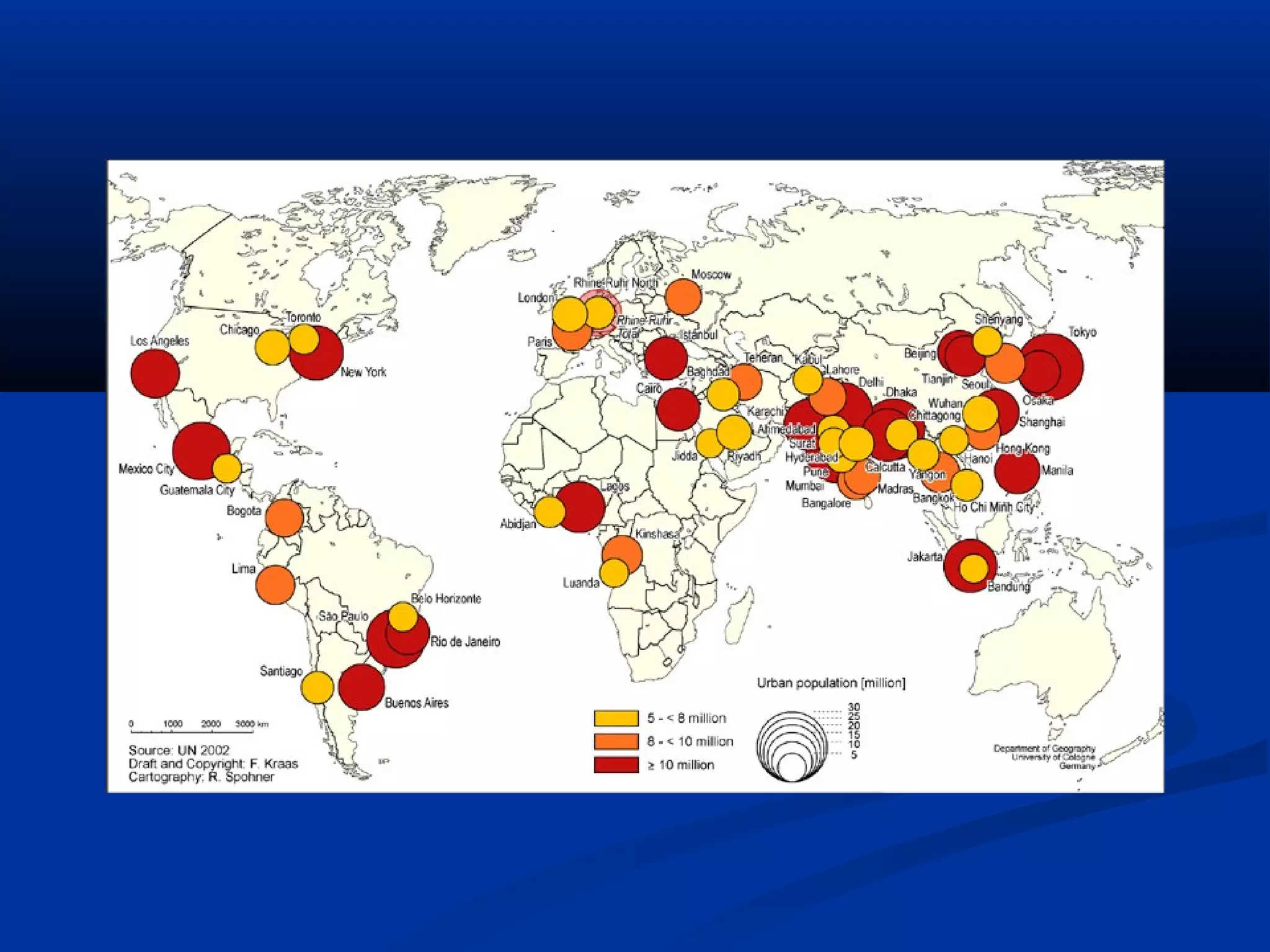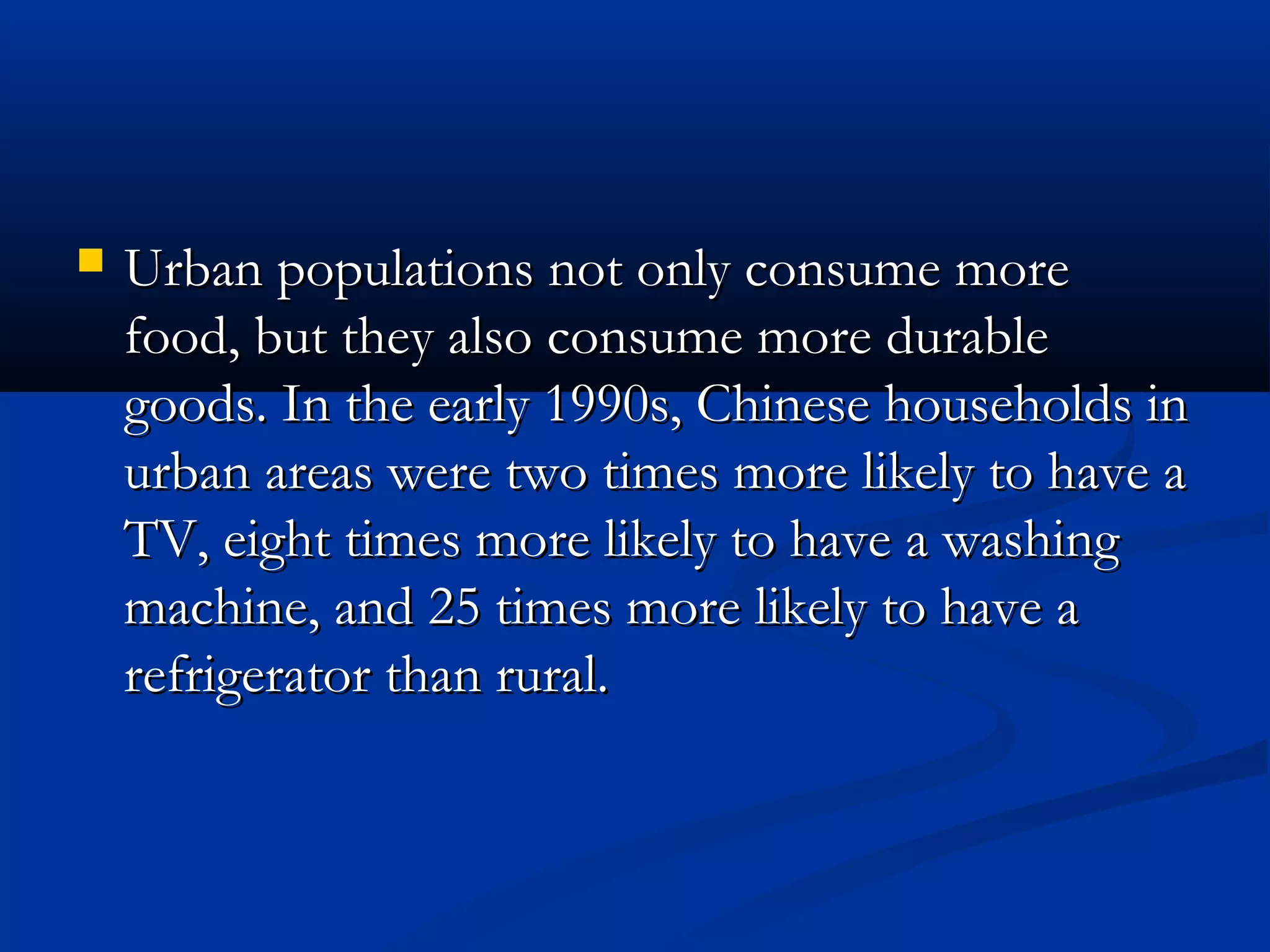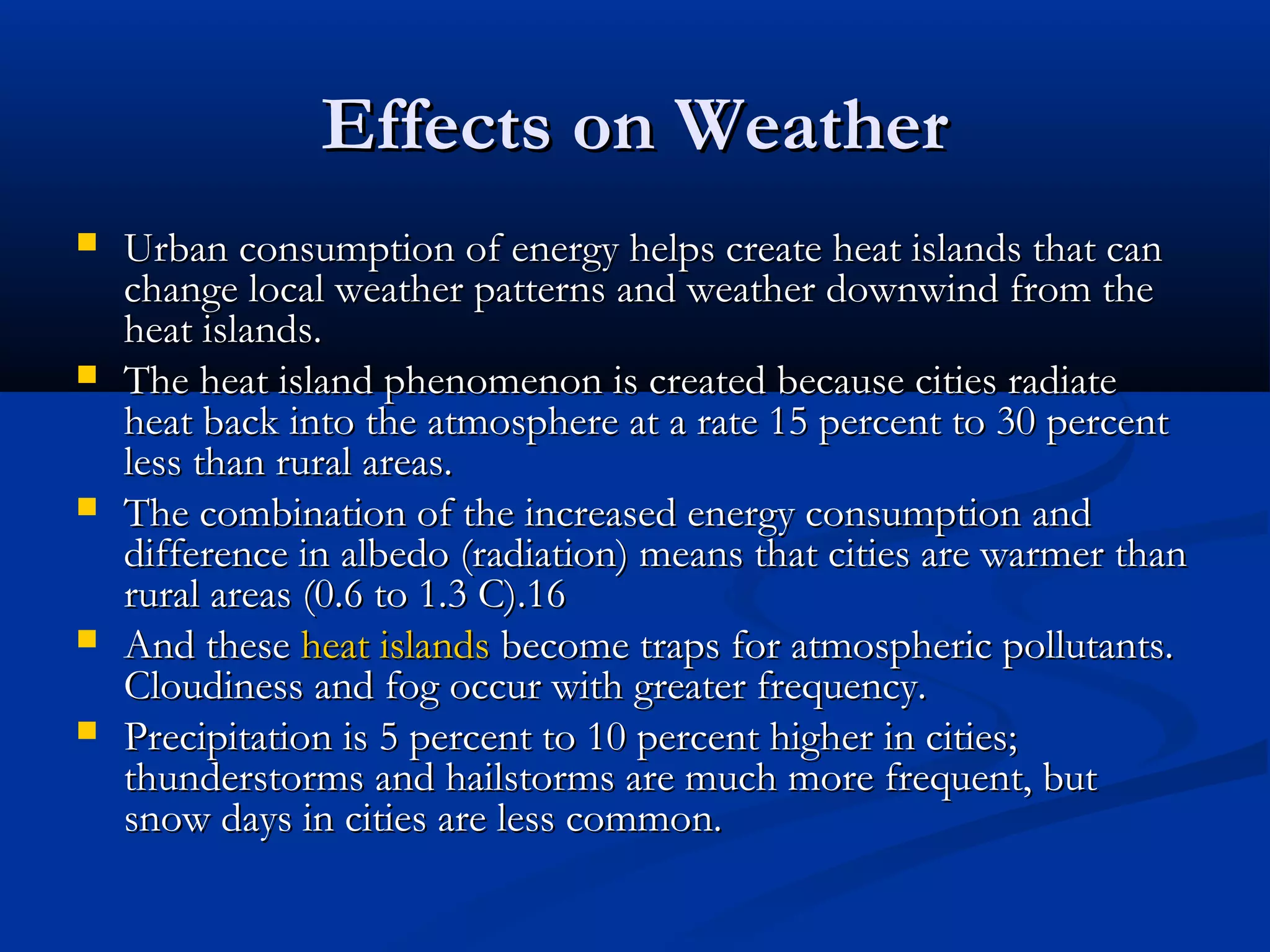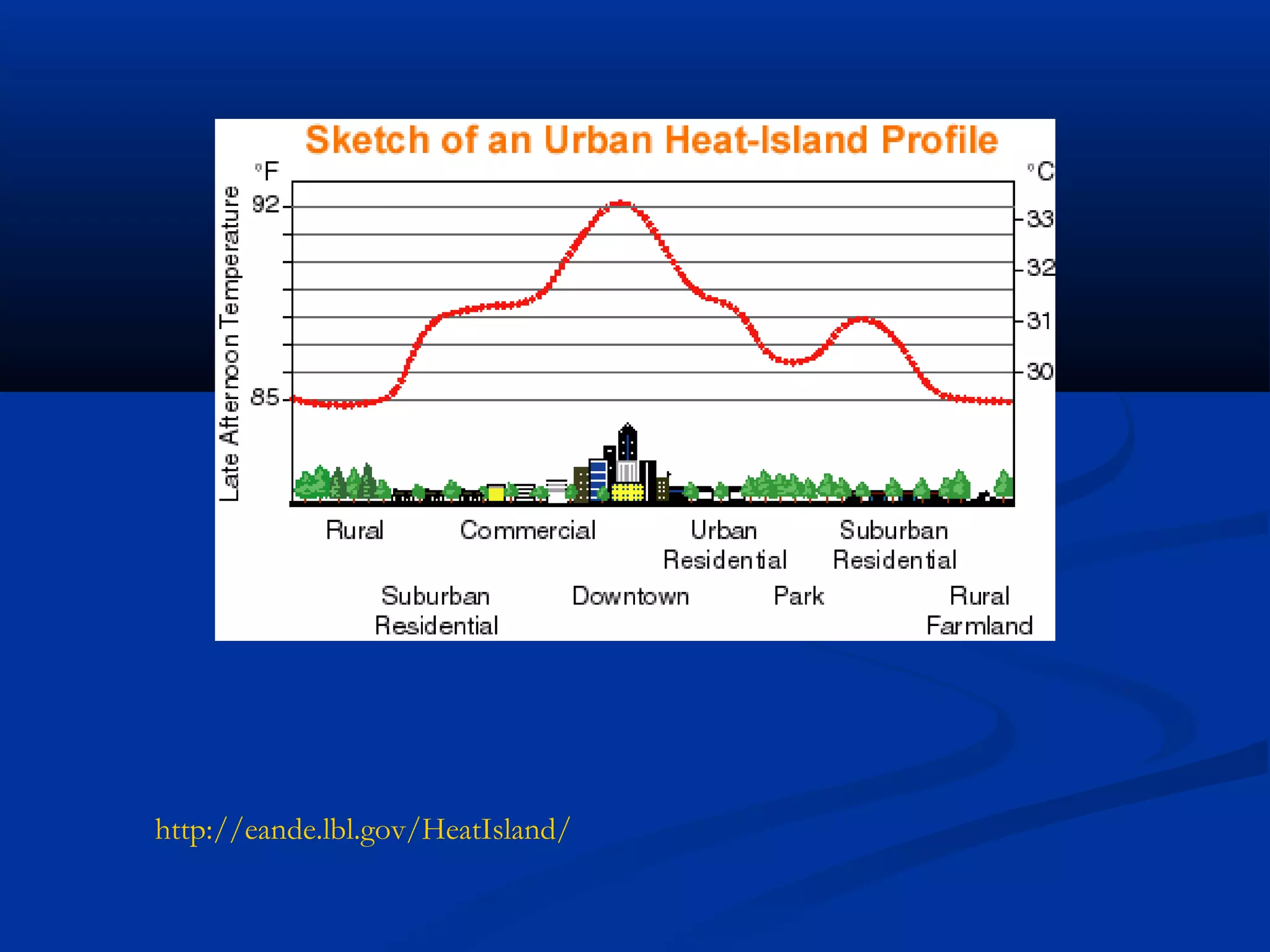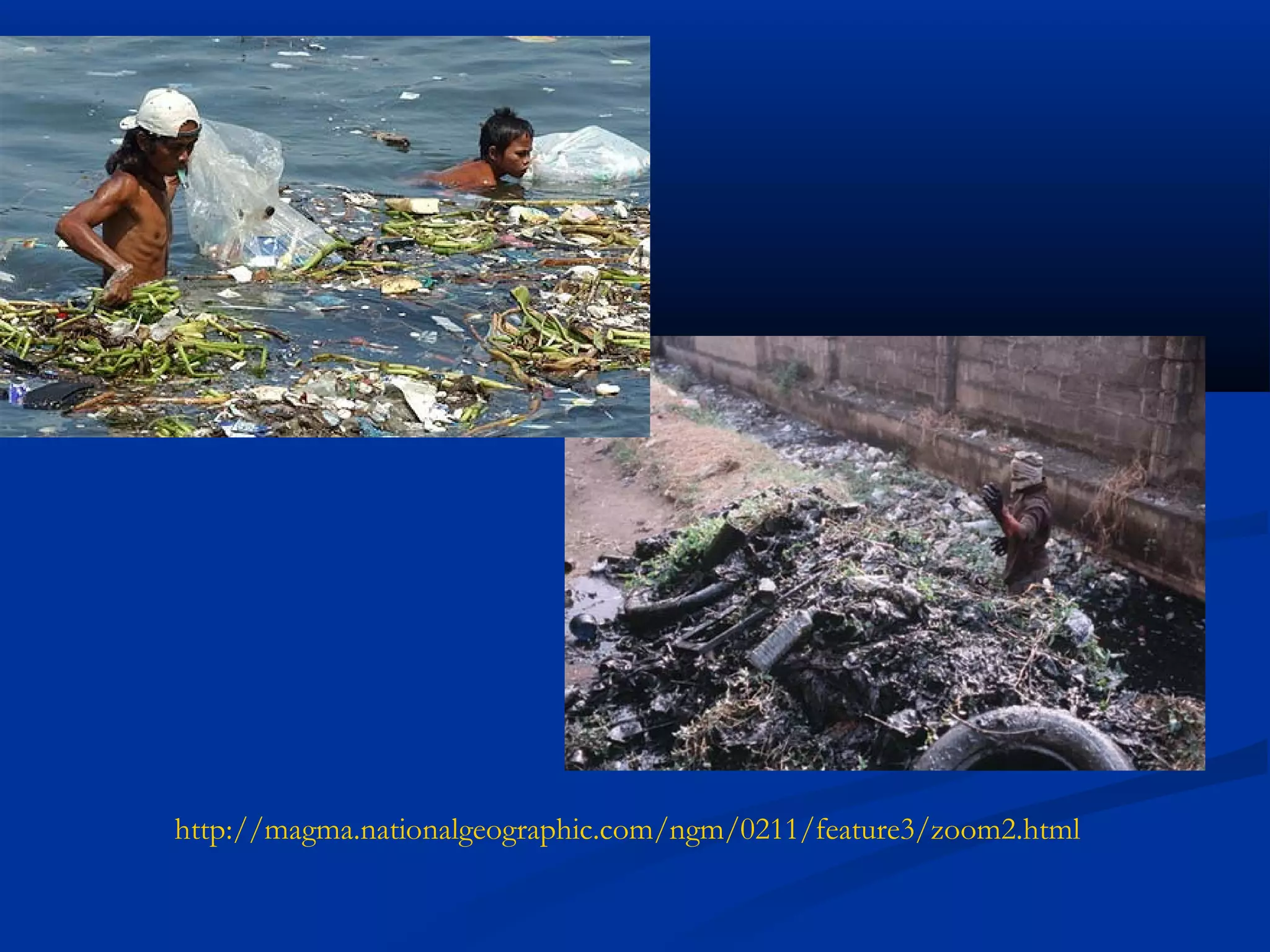Urbanization is the growth of cities due to people shifting from rural areas to urban areas. This document discusses the history and causes of urbanization. It notes that historically most people lived rurally, but the percentage of the world's population living in urban areas has increased over time and surpassed 50% in 2007. Urbanization occurs for different reasons in more developed and less developed countries, with industrialization originally driving urbanization in more developed areas while natural increase and migration fuel urban growth in less developed nations today.


